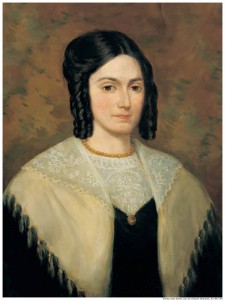Critics of The Church of Jesus Christ of Latter-day Saints (commonly called the Mormon Church) often look at polygamy and immediately assume all kinds of things about Mormon women and their treatment. Misconceptions about this continue into society today, even though polygamy has not been practiced or condoned by The Church of Jesus Christ of Latter-day Saints since 1890. Those who continue the practice today may call themselves Mormons, but have no association with the Latter-day Saints. They are all splinter groups, going back more than 100 years.
 The fact is, though, that even when Mormons were practicing polygamy in the late 19th century, Mormon women were living lives far better than most other women in the United States, and in many parts of the world, at that time. The practice of polygamy was always very small even within the “Mormon Church.” People were not crazy about the idea, and only a select few were asked to live this commandment from God. No one was ever forced into a polygamous marriage. Free will (or free agency) has always been a fundamental principle of Mormon doctrine. Not only was no one forced into a polygamous marriage, but divorce was an option for women who had entered a plural marriage of their own choice and then decided it was not for them. Somewhat shockingly, many women enjoyed the extra freedoms they found in a plural marriage. There were more women to handle and share the burdens of the many responsibilities of a woman in a household. Still, some did not like the lifestyle, and they were free to leave it at any time they chose.
The fact is, though, that even when Mormons were practicing polygamy in the late 19th century, Mormon women were living lives far better than most other women in the United States, and in many parts of the world, at that time. The practice of polygamy was always very small even within the “Mormon Church.” People were not crazy about the idea, and only a select few were asked to live this commandment from God. No one was ever forced into a polygamous marriage. Free will (or free agency) has always been a fundamental principle of Mormon doctrine. Not only was no one forced into a polygamous marriage, but divorce was an option for women who had entered a plural marriage of their own choice and then decided it was not for them. Somewhat shockingly, many women enjoyed the extra freedoms they found in a plural marriage. There were more women to handle and share the burdens of the many responsibilities of a woman in a household. Still, some did not like the lifestyle, and they were free to leave it at any time they chose.
In matters completely unrelated to polygamy, Mormon women were among the first in the United States to be given the vote. The Wyoming Territory was the first, and Utah Territory was the second. Many critics of polygamy thought women would jump at the chance to end polygamy if they were given the vote. Since images of downtrodden Mormon women were misconceptions, Mormon Church leaders held no objection to giving women the right to vote. They hoped by women gaining the vote and still supporting polygamy (which they did), the public view of the treatment of Mormon women through polygamy would change. Thus, the Utah territorial legislature gave women the right to vote in 1870. Congress revoked this right in 1887 as part of a national effort to abolish polygamy. The women eventually regained the right to vote in 1895, and this time they were also given the right to hold office. These rights were written into the constitution of the new state of Utah.
Aside from being granted suffrage, Mormon women were respected from the early days of the Church and contributed to society greatly. The struggle for equal treatment of men and women continues today, but it is important to remember the differences between men and women, to celebrate those differences, and to remember that men and women have different strengths but are of equal value.
Prophet Brigham Young, second president of the LDS Church, said of women:
As I have often told my sisters in the Female Relief Societies, we have sisters here who, if they had the privilege of studying, would make just as good mathematicians or accountants as any man; and we think they ought to have the privilege to study these branches of knowledge that they may develop the powers with which they are endowed. We believe that women are useful not only to sweep houses, wash dishes, make beds, and raise babies, but that they should stand behind the counter, study law or physic [medicine], or become good book-keepers and be able to do the business in any counting house, and this to enlarge their sphere of usefulness for the benefit of society at large (Discourses of Brigham Young, 216–17).
Just three years after the Saints arrived in the Utah Valley, Deseret University was created to help educate both men and women. It was the first coeducational university west of the Mississippi River. In addition, Mormon women have been very active in politics. The first woman state senator, Dr. Mattie Hughes Paul Cannon, was elected from Utah in 1896, and she was a Latter-day Saint (“Mormon”). The first woman (who was neither the daughter nor wife of a politician) elected to the U.S. Senate was also a Latter-day Saint.
Joseph Smith organized the Relief Society on March 17, 1842, with his wife, Emma Hale Smith, as the first president. A small group of women had independently come together to try and aid the men who were building the Nauvoo Temple. Joseph organized them under the authority and after the pattern of the priesthood. They have since become one of the largest and oldest women’s organizations in the world, and their objectives and purposes include to:
- Build faith in the Lord Jesus Christ and teach the doctrines of the kingdom.
- Emphasize the divine worth of each sister.
- Exercise charity and nurture those in need.
- Strengthen and protect families.
- Serve and support each sister.
- Help sisters become full participants in the blessings of the priesthood.
The philanthropic and educational Relief Society is one of the oldest women’s organizations in the world.
Respect for Mormon women continues today. Mormon Church leaders often speak of women’s inherent, divine traits and qualities which especially qualify them to be mothers. Motherhood is not viewed as a submissive, worthless role in Mormon doctrine; quite the opposite. Mormons believe that families are eternal unites. What could be more important than to raise a child with the knowledge that he is a child of God, that Jesus Christ is his Savior, and that he can make a difference in the world living the values and commandments Jesus Christ taught? Male Church leaders often speak with admiration and love about the women of the Church. They are not viewed as inferior and Mormon doctrine teaches that their responsibilities are sacred.
Mormon women today feel love and respect from the leaders of the Church. They find joy and fulfillment in their callings as women of Jesus Christ.


 Watch a video about the restoration of the gospel on lds.org
Watch a video about the restoration of the gospel on lds.org